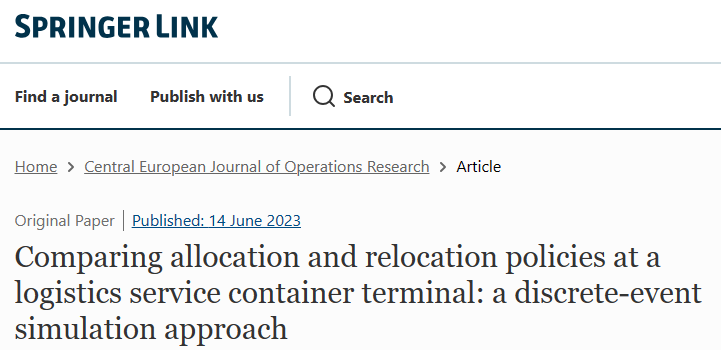Juan P. Cavada, Cristián E. Cortés & Pablo A. Rey
Abstract
This research is focused on the analysis of a container terminal common in industrial zones in urban areas, called the logistic services container terminal (LSCT), defined as a small to medium size inland terminal with no intermodal facilities. The main function of an LSCT is to provide services to a hinterland market. The material handling equipment used is limited to reach stacker cranes and front loaders, and ground transportation in and out is performed using trucks exclusively. Moreover, there are many operations related to servicing customers in special service areas within the yard. In this research, we explicitly recognize the limitations and features associated with the operations within LSCT yards, which means that the problems and solutions must be conceived and addressed in a very unique way, considering that services have to be coordinated with the strategies proposed for managing the movement of containers in and out. This paper characterizes the different aspects present in the treatment of an LSCT and proposes an adapted version of three known greedy decision rules for determining the location for an arriving container. We evaluate the performances of these rules using a discrete-event simulator: the min-max rule outperforms the other tested rules. These rules are also extended to consider the cost of moving relocating containers. The results show that using cost-aware rules while increasing the expected number of relocations reduces the total expected cost significantly.
